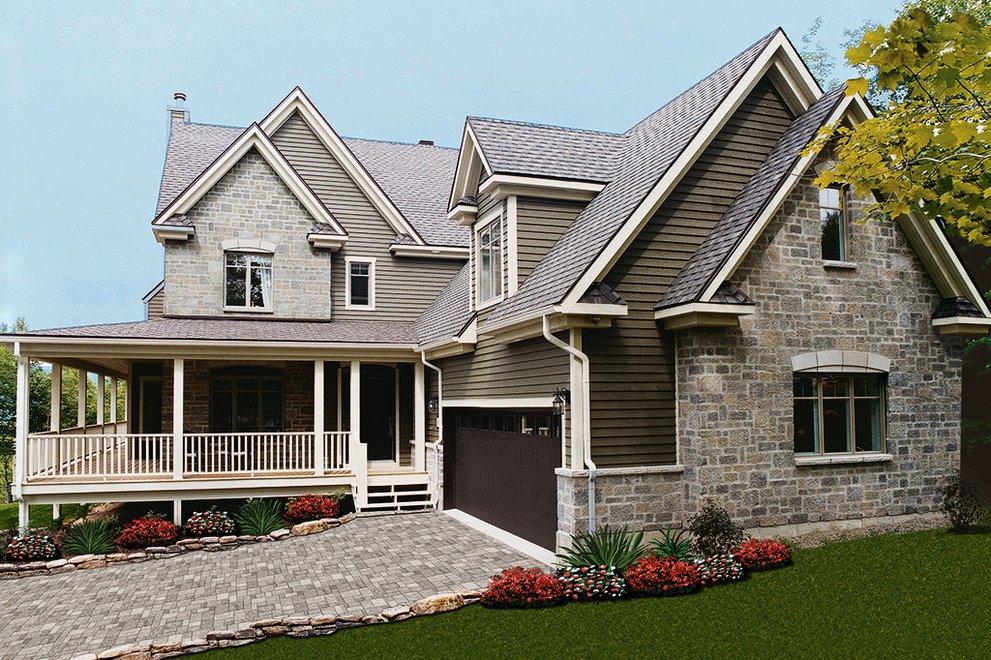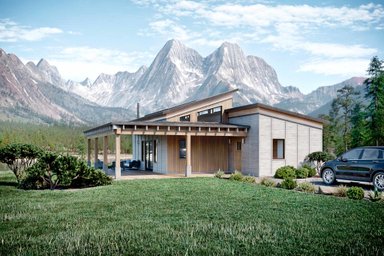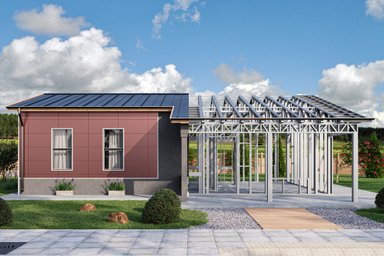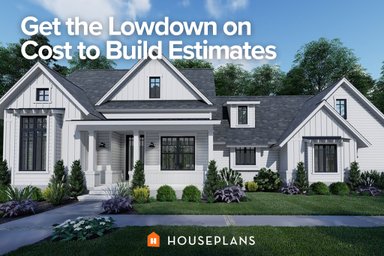Navigating
the world of codes, regulations, ordinances, review boards, etc.
Restrictions are placed on a piece land and building codes must be complied with in order to protect the health, safety and welfare of the public and to ensure that no one neighbor builds to the detriment of the neighbors and community. Identifying all of the restrictions that will have an impact on the project can be quite the task. And then designing the project to comply with these issues will take some skill and expertise.
Zoning regulations. Just about every piece of land that can be built on will have restrictions placed on it. These can address use, size, height and location of the house you want to build. These regulations serve a useful purpose in that they help to ensure that, say, all of the buildings in a neighborhood are single family residential. Let’s face it, who wants a factory built next to their home? So very early in the project design it’s important to become familiar with these regulations so that any you know if you can, in fact, build that home. That’s not to say that you can’t seek a variance from these restrictions. Just bear in mind that seeking such a variance isn’t guaranteed and can be costly. A typical residential zoning data chart could look like this:
Building codes. While there are national standards and a code governing council, local building codes are just that, local. What most states, counties, municipalities around the country do is adopt a national standard, like the International Residential Code published by the International Code Council, with some modifications. So, for example, a state like Florida will adopt this code and then supplement it with specific criteria to address hurricane related issues. Of course, the local building official, or code compliance officer, is the final arbiter of what codes a project must conform to. This is why it’s always useful to meet with this person before getting too far into the design and planning of any project. In addition to text, a building code will often contain graphic information such as a map with wind speed design criteria, as shown here.
Design, historic, and other review boards. Sometimes a neighborhood will restrict the style of home that can be built and can even limit the palette of materials that can be used. Sometimes a home is to be located in an historic district so must comply with specific guidelines to maintain a neighborhood’s visual integrity. In these cases, it’s useful to meet with the folks from the review board so that you know what it is that’s expected. In fact, you’ll want to know what design guidelines exist before buying the property. And I’ve always found it useful to have not just drawings but a small model of the proposed home ready for the formal design review in front of any of these boards. Having such a model allows the board members a chance to actual get a really good feel for your project and that will hopefully get you a quick approval.
Some municipalities, like Arlington Heights, Illinois, have published useful design guidelines for new home construction. A typical page from this manual, shown here, explains how to manipulate" architectural elements to reduce the visual mass, or size, of a new home in an older neighborhood to make a "good neighbor.”
Restrictions are placed on a piece land and building codes must be complied with in order to protect the health, safety and welfare of the public and to ensure that no one neighbor builds to the detriment of the neighbors and community. Identifying all of the restrictions that will have an impact on the project can be quite the task. And then designing the project to comply with these issues will take some skill and expertise.
Zoning regulations. Just about every piece of land that can be built on will have restrictions placed on it. These can address use, size, height and location of the house you want to build. These regulations serve a useful purpose in that they help to ensure that, say, all of the buildings in a neighborhood are single family residential. Let’s face it, who wants a factory built next to their home? So very early in the project design it’s important to become familiar with these regulations so that any you know if you can, in fact, build that home. That’s not to say that you can’t seek a variance from these restrictions. Just bear in mind that seeking such a variance isn’t guaranteed and can be costly. A typical residential zoning data chart could look like this:
Building codes. While there are national standards and a code governing council, local building codes are just that, local. What most states, counties, municipalities around the country do is adopt a national standard, like the International Residential Code published by the International Code Council, with some modifications. So, for example, a state like Florida will adopt this code and then supplement it with specific criteria to address hurricane related issues. Of course, the local building official, or code compliance officer, is the final arbiter of what codes a project must conform to. This is why it’s always useful to meet with this person before getting too far into the design and planning of any project. In addition to text, a building code will often contain graphic information such as a map with wind speed design criteria, as shown here.
Design, historic, and other review boards. Sometimes a neighborhood will restrict the style of home that can be built and can even limit the palette of materials that can be used. Sometimes a home is to be located in an historic district so must comply with specific guidelines to maintain a neighborhood’s visual integrity. In these cases, it’s useful to meet with the folks from the review board so that you know what it is that’s expected. In fact, you’ll want to know what design guidelines exist before buying the property. And I’ve always found it useful to have not just drawings but a small model of the proposed home ready for the formal design review in front of any of these boards. Having such a model allows the board members a chance to actual get a really good feel for your project and that will hopefully get you a quick approval.
Some municipalities, like Arlington Heights, Illinois, have published useful design guidelines for new home construction. A typical page from this manual, shown here, explains how to manipulate" architectural elements to reduce the visual mass, or size, of a new home in an older neighborhood to make a "good neighbor.”






